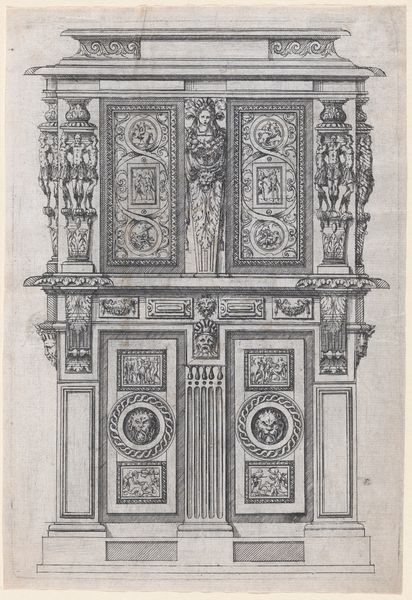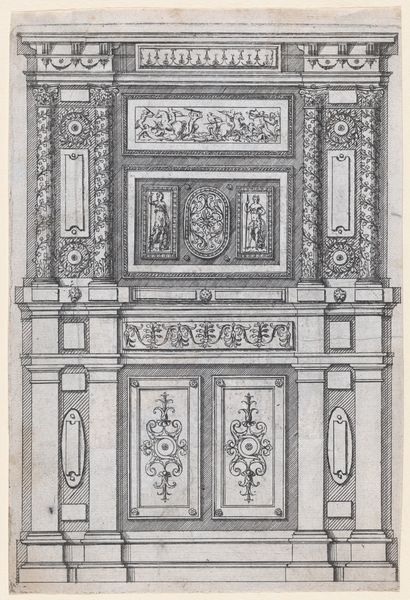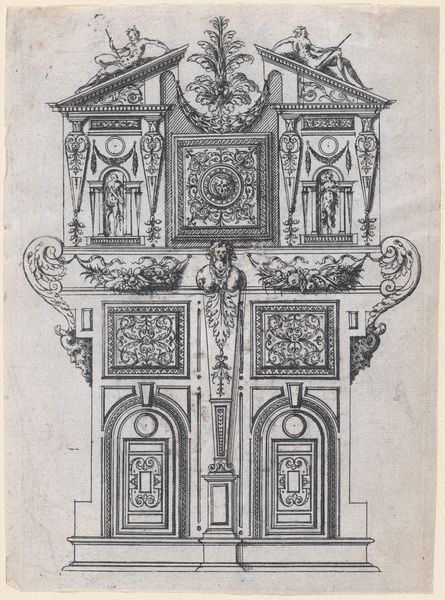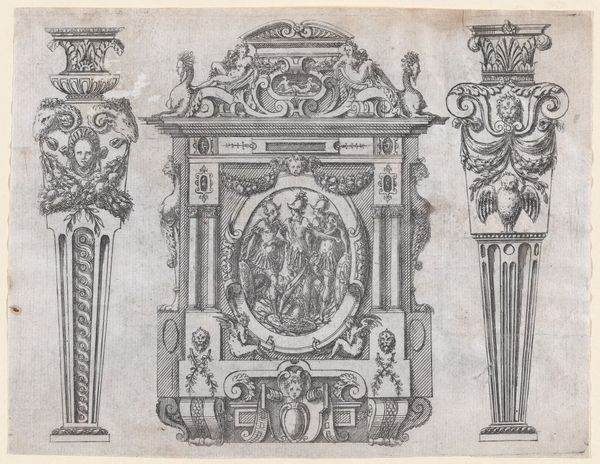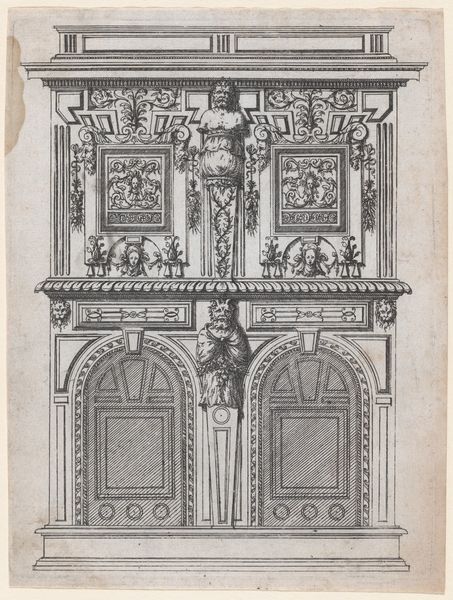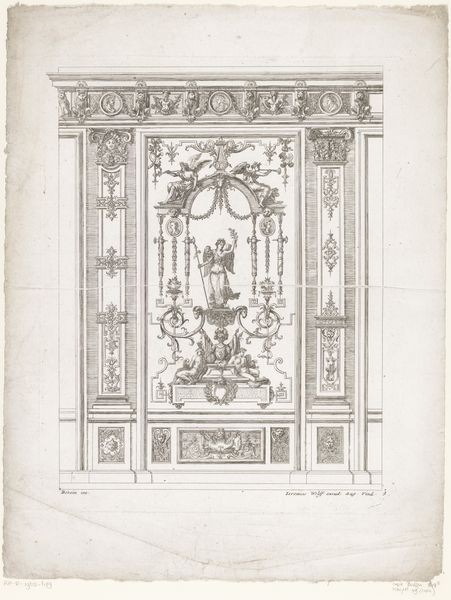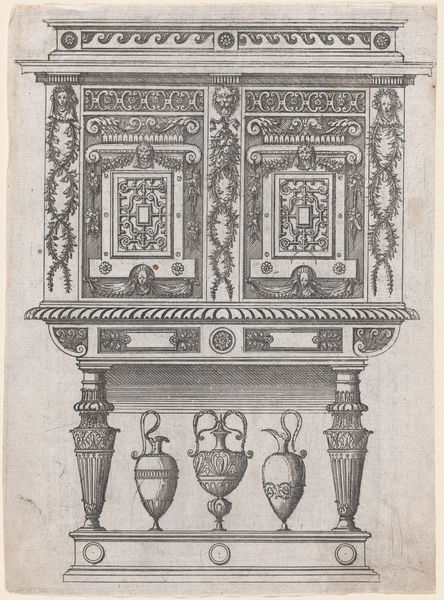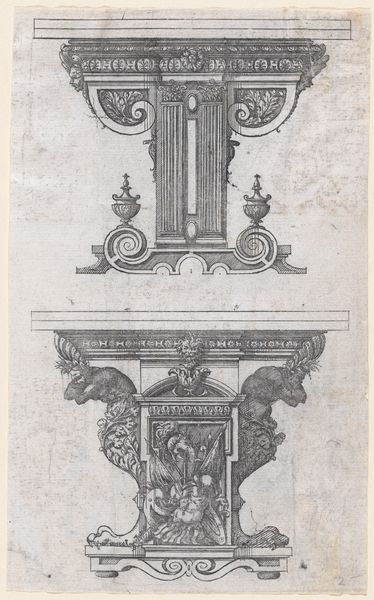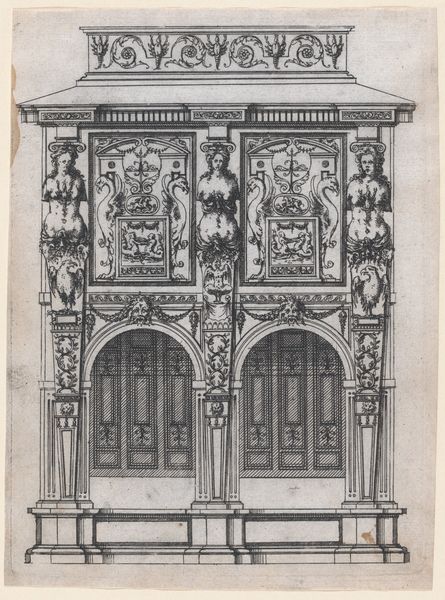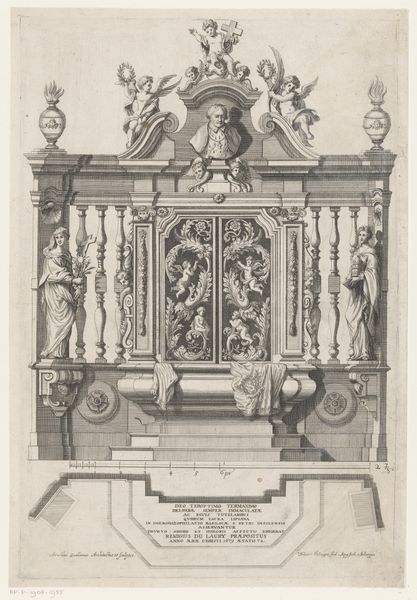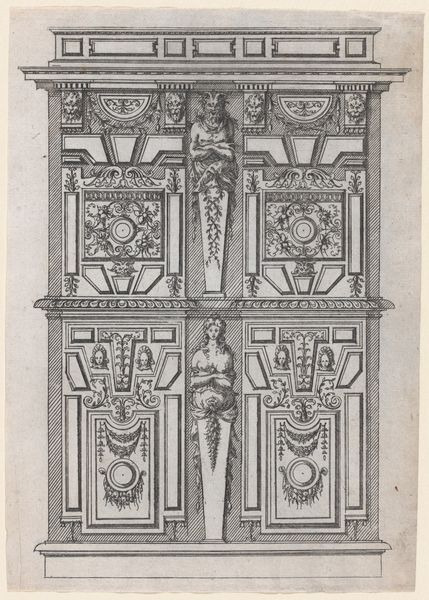
drawing, print, engraving
#
drawing
# print
#
form
#
11_renaissance
#
line
#
decorative-art
#
italian-renaissance
#
engraving
Dimensions: Sheet: 7 5/8 × 5 1/8 in. (19.3 × 13 cm)
Copyright: Public Domain
Curator: Look at the intricate detail in this engraving entitled "Furniture Design," crafted between 1565 and 1570 by Jacques Androuet Du Cerceau. It is currently held at the Metropolitan Museum of Art. Editor: Immediately, I’m struck by the density of the imagery and line work. The careful construction almost reads as architectural drawing more than design, a sort of temple celebrating the home and hearth. It’s ornate, very clearly designed for a very wealthy patron, and it speaks volumes about status and power. Curator: Yes, absolutely. We can certainly delve into how representations of wealth intersect with societal structures. Consider how Du Cerceau’s Protestant identity positioned him within the politically charged context of the French Renaissance, often commissioned by the monarchy to shape taste and fashion. Editor: These allegorical figures, those garlands and urns, aren't just decoration. Each motif serves a function, drawing from classical mythology. The cornucopia of wealth on display… it’s almost aggressively opulent, a declaration. What sort of person or household might commission this? Curator: Well, this piece can be situated within the framework of the rise of the merchant class during this time period. Newly acquired economic power was a direct challenge to inherited aristocratic power structures, the very definition of challenging the established social order. Commissions were crucial to establishing that dominance through patronage. Editor: Fascinating. And looking closely at those figures flanking the main cabinet… their gestures seem so self-assured. The design proclaims dominion over not just space, but also taste. Curator: This points towards how notions of "taste" were evolving alongside concepts of individual identity and social aspiration, as this emerging merchant class directly contested notions of pre-ordained social roles. We need to understand art within this cultural landscape of identity formation and power negotiation. Editor: In short, every detail tells a story of cultural ambition. Taking a wider look at this reminds me that visual symbols reflect a long continuity in how we signal power, beauty, and lasting legacy. Curator: It’s about more than individual expression; it's about the dynamic between art, identity, and society during the Renaissance period. I'm left pondering what furniture design says about power in our own era.
Comments
No comments
Be the first to comment and join the conversation on the ultimate creative platform.
